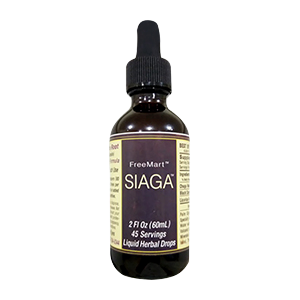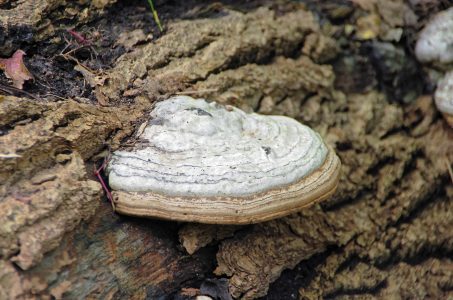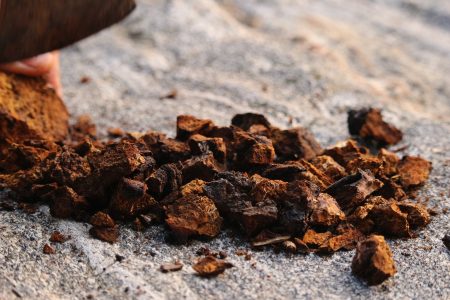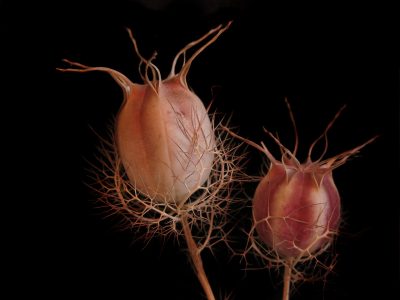Siaga™
 Siaga™ is a proprietary extract of three very important herbs; Chaga Mushroom, Black Cumin Seed and Licorice Root sold exclusively by a member shopping club called ShopFreeMart.
Siaga™ is a proprietary extract of three very important herbs; Chaga Mushroom, Black Cumin Seed and Licorice Root sold exclusively by a member shopping club called ShopFreeMart.
Chaga King of Herbs
Chaga is one of God’s greatest gifts to your health. Its nickname “Mushroom of Immortality” appears to be more than just a clever slogan. Chaga’s scientific name is Inonotus Obliquus. It is a non-toxic mushroom that has been used for centuries in many corners of the world due to its many medicinal qualities.
The chaga mushroom found in Siaga™ is wild crafted and harvested from a pristine forest in northern United States.
Like many good things, Chaga is extremely rare, impossible to reproduce artificially, and can take up to 30 years to grow in the wilderness.
It is one of the most powerful food antioxidants in the world and it has the highest level of superoxide dismutase (SOD) that has been detected in any food or herb.
Some of the active components in Chaga are a combination of Amino Acids, Beta-glucans, Betulinic Acid, Calcium, Chloride, Copper, Dietary Fiber, Enzymes, Flavonoids, Germanium, Inotodiols, Iron, Lanosterol, Manganese, Magnesium, Melanin, Pantothenic Acid, Phenols, Phosphorus, Phytonutrients, Polysaccharides, Potassium, Saponins, Selenium, Sodium, Sterols, Trametenolic Acid, Tripeptides, Triterpenes, Triterpenoids, Vanillic Acid, Vitamin B1 (Thiamine), Vitamin B2 (Riboflavin), Vitamin B3 (Niacin), Vitamin D2 (Ergosterol), Vitamin K and Zinc.

It would require an entire book to expound upon all of the molecules, elements and compounds found in Chaga mushroom alone, so the sake of brevity, I will only touch upon a very few in this report.
Chloride
Chloride is a very important electrically charged mineral (electrolyte) that works with other electrolytes, such as sodium and potassium, to help balance acids and bases in your body. It also helps move fluid in and out of your cells.
Zinc
Zinc is thought by many nutritionists to be the most important mineral supplement because it is commonly deficient in the diet.
Zinc is essential to human growth, activity of many enzyme systems and for normal functioning of the immune system.
Zinc is key to proper T cell and natural killer cell function and proper lymphocyte activity; it may be directly involved in antibody production to help you fight infection.
Zinc aids in amino acid metabolism, protein digestion, and energy production, as well as in immune function and in preventing free radical damage, supports good prostate and reproductive health in men, is important for teenagers during sexual development and supports optimum immune function.
Common symptoms of zinc deficiency include loss of appetite, impaired senses of smell and taste, growth retardation, delayed wound healing, depression, impaired concentration, nervousness, night-blindness and slowed nail and hair growth. (1)
Beta glucans
Beta glucans are sugars that are found in the cell walls of bacteria, fungi, yeasts, algae, lichens, and plants.
They are sometimes used as medicine.
Beta glucans are used in medicine for high cholesterol, diabetes, cancer and HIV/AIDS.
Beta glucans are also used to boost the immune system in people whose body defenses have been weakened by conditions such as chronic fatigue syndrome, or physical and emotional stress, or by treatments such as radiation or chemotherapy.
Beta glucans are also used for common colds, flu, H1N1 (swine) flu, allergies, hepatitis, Lyme disease, asthma, ear infections, aging, ulcerative colitis, Crohn’s disease, fibromyalgia, rheumatoid arthritis and multiple sclerosis. (2)
Germanium
Chaga mushroom is one of the richest sources of natural germanium.
Germanium is a powerful healer as well as pain reliever.
One of the reasons is due to the fact that the millions of germanium atoms produce negatively charged ions that have the effect of neutralizing the poisonous positively charged ions that are associated with pain and inflammation.
Thus, having Germanium in your body could help to protect you from mobile phones, computers, electronic and electrical equipment, chemicals, acid rain and ultraviolet rays.
This process is also known as the dehydrogenation effect where oxygen atoms combine with hydrogen ions which have accumulated in the body to remove them.
This also achieves muscle relieving effects as well as reducing fatigue and tiredness.
Organic Germanium enriches the body’s oxygen supply and is also a potent antioxidant, properties which contribute to this trace element’s widespread beneficial effects upon many inter-related metabolic process in the body.
Germanium was discovered in 1886, but received little attention in the field of nutrition due to the fact that very little germanium occurs in the earth’s crust and therefore research scientists hadn’t suspected that plants contained germanium until Dr. Kuzihiko Asai began researching germanium in 1948.
Dr. Asai suspected the potential benefits of organic germanium in human health when he discovered that medicinal plants such as ginseng, aloe vera, comfrey, garlic, chlorella, chaga and shiitake mushrooms contained very high natural concentrations of this rare mineral, leading to speculation that germanium accounted for much of their therapeutic activity.
Dr. Asai began experimenting with giving organic germanium to patients, in doses ranging from 100-300 mg. of a day, and found it to be effective in treating rheumatoid arthritis, food allergies, elevated cholesterol levels, Candida albicans, chronic viral infections, and cancer.
Germanium also evidenced impressive activity in helping to control pain. (3)
Chaga Mushroom May Help

- Lower high cholesterol
- Separate sticky blood cells
- Boost the oxygenation of blood.
- Ease inflammation and sooth arthritis pain
- Protect the body from oxidative stress
- Prevent kidney stones caused by oxalates in coffee and tea
- Help maintain acid / alkaline balance
- Reduce high blood pressure
- Provide the body with minerals, vitamins, enzymes and glyconutrients
- Accelerate healing from physical burns and radiation burns
- Relieve constipation
- Stabilize blood sugar and reduce triglycerides in diabetics
- Improve kidney function
- Improve electrolyte balance
- Boost cardiovascular performance and physical endurance
- Speed recovery from injury or physical exertion
Black Cumin Seed

Black seed (Nigella sativa) is considered to be one of the greatest healing herbs of all times.
This herb has been used for millenniums to strengthen the immune system, cleanse the body, purify the blood, protect against irritants and support healthy longevity.
Black Seed has been used to make medicines for over 2000 years.
It was found in the tomb of King Tut and was supposedly put there to help him in his afterlife.
The prophet Isaiah wrote about it in the Bible and the prophet Muhammad claimed that it “cures everything but death.”(4)
Nigella sativa seeds have wide therapeutic effects and have been reported to have significant effects against many ailments such as skin diseases, jaundice, gastrointestinal problems, anorexia, conjunctivitis, dyspepsia, rheumatism, diabetes, hypertension, intrinsic hemorrhage, paralysis, amenorrhea, anorexia, asthma, cough, bronchitis, headache, fever, influenza and eczema.(5)
Historically, black seed has been used for headache, toothache, nasal congestion, and intestinal worms.
It has also been used for pink eye, infections, and abscesses, digestive tract conditions including gas, colic, diarrhea, dysentery, constipation, and hemorrhoids.
It has also been used for respiratory conditions including asthma, allergies, cough, bronchitis, emphysema, and congestion.
Women have used black seed to start menstruation, and to increase milk flow.
Some people apply black seed directly to the skin for joint pain (rheumatism), headache, and certain skin conditions.
In foods, black seed is used as a flavoring or spice.
Antihistaminic and Antiallergenic
One of the most important components in black seed is the volatile oil Nigellone which acts as an antihistamine and is known to be effective for bronchial asthma and respiratory allergies.
It has the ability to expand and relax the airways, reduces the release of histamines into the bloodstream and works against allergic reactions.
Antibiotic
Research also revealed that black seed possesses antibiotic properties that act against a wide spectrum of gram-positive and gram-negative bacteria.
In side-by-side tests Black Cumin matched or exceeded the effectiveness of ampicillin in defeating gram-positive bacteria. (4)
Licorice Root (Glycyrrhiza Glabra)
Licorice Root is an adaptogenic herb found in Europe, the Mediterranean and Asia.
It has been used for thousands of years and for dozens of purposes, including improving metabolism and also as a leaky gut remedy.
Licorice root is so complex that researchers have isolated 170 different compounds in Chinese licorice.
There are at least four main types of compounds found in licorice root: flavonoids, coumarins, triterpenoids and stilbenoids.
Anti-Inflammatory
A prominent example of the benefits found in these compounds is the flavonoid glabradin, which researchers discovered in the 1970s.
Researchers observed glabradin to be anti-inflammatory, having a beneficial effect upon coughs, colds, gastrointestinal issues and female reproductive issues.
This should come as no surprise since licorice was widely used for centuries in Chinese medicine as an anti-inflammatory herb.
It was also used frequently in Chinese medicine as a “guide herb” (in tandem with two or more other herbs) to synergistically enhance their effects and essentially guide the other herbs to where they would be most beneficial.
This use was observed and reviewed by the Tianjin University of Traditional Chinese Medicine in 2013.
Adrenal Support
The herb’s key therapeutic compound, glycyrrhizin (which is 50 times sweeter than sugar) exerts numerous beneficial effects on a host of ailments, including to prevent the breakdown of adrenal hormones such as cortisol (the body’s primary stress-fighting adrenal hormone), making these hormones more available to the body.
Heartburn
Licorice has a well-documented reputation for healing ulcers. It can lower stomach acid levels, relieve heartburn and indigestion and acts as a mild laxative.
Licorice can also be used for irritation, inflammation and spasm in the digestive tract.
Through its beneficial action on the liver, it increases bile flow and lowers cholesterol levels.
In recent research licorice has also been hailed for its potential to fight tooth decay.
Immune Support
Licorice also appears to enhance immunity by boosting levels of interferon, a key immune system chemical that fights off attacking viruses.
It also contains powerful antioxidants as well as certain phytoestrogens that can perform some of the functions of the body’s natural estrogens; very helpful during the menopause. Glycyrrhizinic acid also seems to stop the growth of many bacteria and viruses such as influenza A.
Anti-allergenic
Licorice has shown anti-allergenic properties that may be very useful for hay fever, allergic rhinitis, conjunctivitis and bronchial asthma.
Pain and Stress Relief
Licorice has an aspirin-like properties that may be helpful in relieving fevers and soothing pain such as headaches.
Possibly by its action on the adrenal glands, licorice has the ability to improve resistance to stress.
It should be thought of during times of both physical and emotional stress, after surgery or during convalescence, or when feeling tired and run down.
Respiratory Problems and Sore Throat
Licorice eases congestion and coughing by helping to loosen and thin mucus in airways; this makes a cough more “productive,” bringing up phlegm and other mucus bits.
Licorice also helps to relax bronchial spasms.
This herb also soothes soreness in the throat and fights viruses that cause respiratory illnesses and an overproduction of mucus, such as irritating coughs, asthma and chest infections.
PMS and Menstrual Problems
The phytoestrogens in licorice have a mild estrogenic effect, which can have a very positive effect on women’s health, making this herb potentially useful in easing certain symptoms of PMS (premenstrual syndrome), such as irritability, bloating and breast tenderness.
Although the glycyrrhizin in licorice actually inhibits the effect of the body’s own estrogens, the mild estrogenic effect produced by licorice’s phytoestrogens manages to override this inhibiting action.
Claims

No claims are made for this product.
The foregoing information was gathered from several websites, including Pub Med sites from various countries, that are believed to be reliable and which are readily available to the reader.
It is presented for educational purposes only and Not as medical advice.
ShopFreeMart Siaga™ is Not a medicine and is Not meant to prevent or treat any disease.
Any possible benefits to be derived from using this product are strictly nutritional.
Recommended Use: For maintenance, take 3 droppers (approximately one-third full) daily.
Can be taken with or without food, but is recommended to separate one-half hour from medications.
If pregnant or under a doctor’s care, please consult your doctor before using.
Ingredients: ShopFreeMart Siaga™ is an extract of Chaga Mushroom, Black Cumin Seed, Licorice Root suspended in Kosher Vegetable Glycerin and Water with Trace Minerals including Gold, Silver, Copper and Iodine and a trace amount of Grape Alcohol, which preserves all of the natural benefits of these three herbs.
Join the free membership buying club today
ShopFreeMart
Get your Siaga™ product Now!
Click: Freemart2OrganicHealth
- http://www.dummies.com/health/nutrition/zinc-the-immune-system-nutrient/
- https://www.webmd.com/vitamins-supplements/ingredientmono-1041-beta-glucans.aspx?activeingredientid=1041&activeingredientname=beta-glucans
- https://nutritionreview.org/2013/10/germanium-ge132/
- https://archive.org/stream/BlackSeedsBenefits/Black-Seeds-Benefits_djvu.txt
- https://www.ncbi.nlm.nih.gov/pmc/articles/PMC4387228/